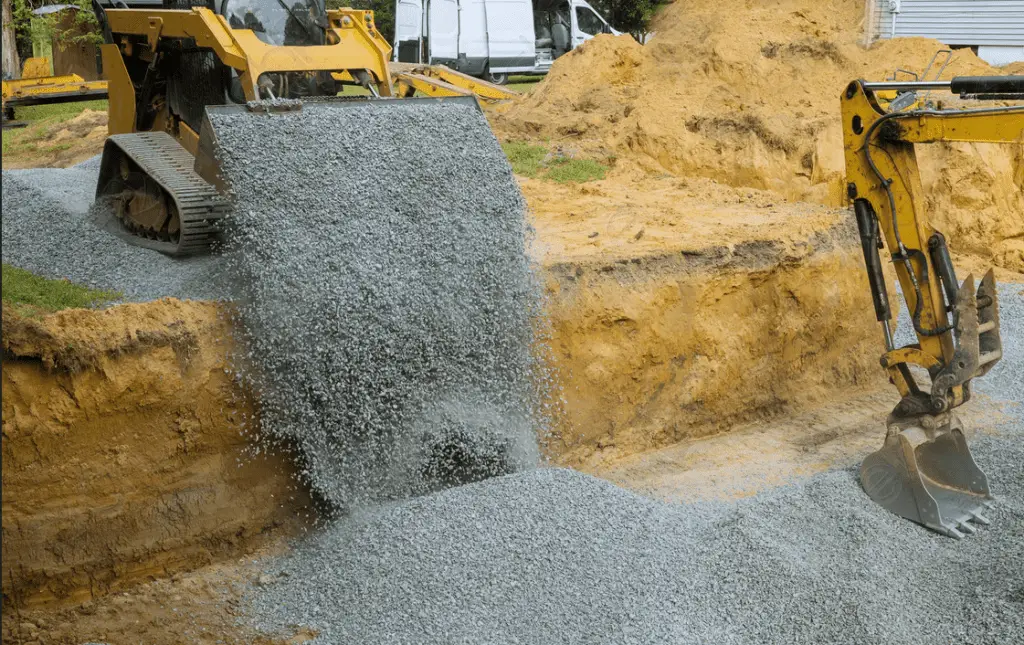Gravel is often used to describe a mixture of different-sized pieces of stone mixed with sand and clay. In the building industry, we often use gravel to make concrete, mix it with asphalt, create foundations for new roads, fill construction sites, and even create other construction materials like blocks, pipes, and bricks.
However, gravel has one important characteristic that we use in construction. Gravel is generally considered free from frost heaving.
Does gravel have a greater frost depth?
Yes, gravel has greater frost depth than typical soil. Usually, gravel is considered free from frost heaving. In construction, gravel with less than 10% grains smaller than 0.02 mm is insensitive to frost. However, if gravel has more dust, sand, and clay, it becomes more sensitive to frost.

But there is one problem. Frost can penetrate gravel more profoundly than clay, sand, or silt, substantially increasing the frost depth to below the footing.
Because of that, we need to calculate the proper frost line depth by zip code and use gravel as the foundation. Read our article to learn how to check frost depth.
Does gravel backfill affect frost depth?
Yes, gravel backfill affects frost depth because gravel is free from frost heaving and prevents frost from penetrating too deeply. It is excellent practice to use gravel backfill because it supports and strengthens a structure and discourages weeds from growing. Additionally, gravel stops excess moisture and provides a natural drainage system.
Let us discuss gravel and soil frost penetration.
A soil surface area had a lower surface temperature at the same depth. Moisture in the pavement rose to the soil surface during the freezing process. Moisture content in the top layer of the soil surface area was the greatest at the same depth as the rest. The total frost heaving was more concentrated in the pavement shoulder area than the pavement region. Recent studies showed the frost heave model’s accuracy and reliability to be acceptable in tests conducted in the lab and using FEM. Theoretically, these findings may aid in the study of frost-heaving features.
Soil frost heaving properties have been studied extensively by researchers domestically and internationally. The phenomena of soil frost-heaving properties are widely regarded as a combination of heat, dampness, and topsoil. Moisture in the top layer of soil freezes first, causing the soil volume to expand and creating an opposing force in that frozen region under circumstances of negative temperature. Moisture from neighboring places may be drawn by the passageway when the soil moisture is high—consequently, the ice increases, resulting in frost heaving at the soil’s foundation. Temperature and moisture are external conditions, whereas soil is a core element in determining soil frost heaving.
Conclusion
Popular approaches to reducing soil moisture content, increasing structure layer thickness, and replacing frost-prone soil include lowering soil humidity, increasing arrangement layer wideness, and substituting ground that is less exposed. Gravel soil is, by definition, devoid of frost heave. As a result, it is often utilized as a soil basis for building in areas where the ground is frequently covered by frozen ground. However, frost heaving may still occur in gravel soil if it includes sufficient sandy soil, particularly silt.
Based on recent research, the most vulnerable soils to frost-heaving deformation are those with >6% of the grain size smaller than 0.05 millimeters, according to specific experimental data. Gravel soil’s susceptibility to frost heaving is intimately tied to its sediment and humidity content, although little is known about this relationship. Frozen deepness, mud category, and variables such as dryness and wetness all play a role in determining the antifreeze layer thickness in pavement design criteria. Frost heaving may occur in pavement systems that satisfy design criteria, particularly in the shoulder area, where frost heaving is more problematic.
Within pavement construction, the temperature rises steadily from top to bottom. Different locations’ temperatures stay at 0 °Celsius over time (except for the surface temperatures in each area). Moisture moving upward and towards the soil surface occurs during the freezing process. After freezing, the soil’s moisture content is at its peak. Slight shrinkage, rapid frost heaving, and stabilization are the three phases of frozen shearing.
The finite element model’s analysis of temperature, moisture, and deformation variations is almost identical to laboratory tests. Due to greenhouse gas emissions, the atmosphere’s temperature will rise, altering the frost-heaving properties of a gravel soil foundation.
FAQs
What is Gravel frost depth?
Gravel is frost-heave-free. It’s typically used as construction soil in locations with frozen ground. Frost heaving may occur in gravel soil if it contains enough silt. According to experiment data, soils with >6% grain size smaller than 0.05 mm are more prone to frost-heaving deformation. Little is known about the link between gravel soil silt, moisture content, and frost heaving.





